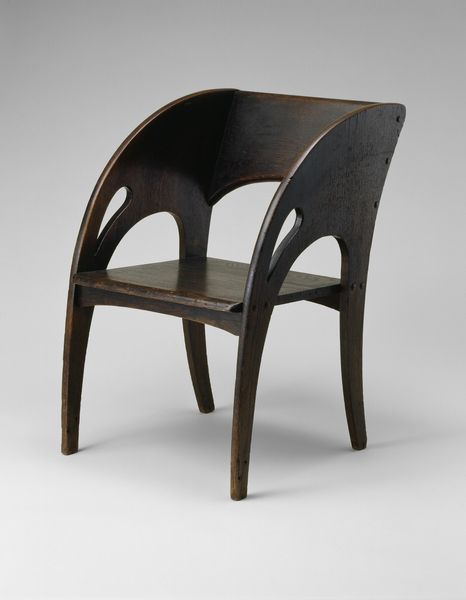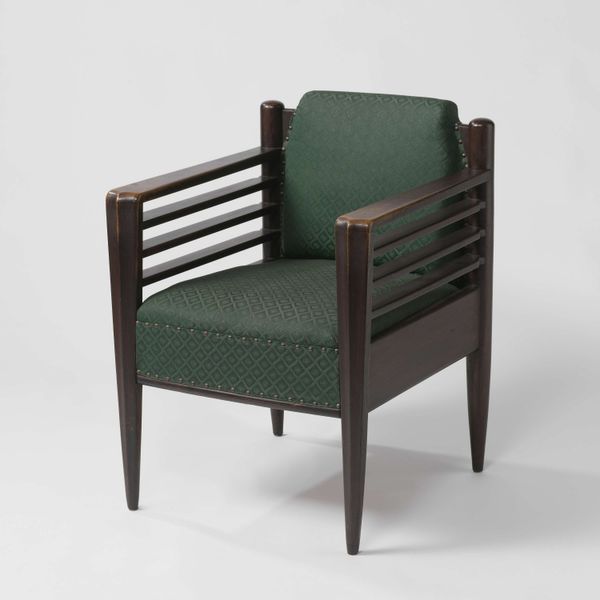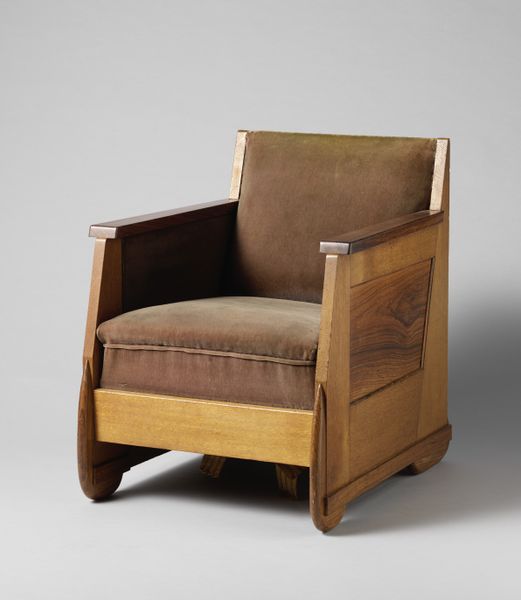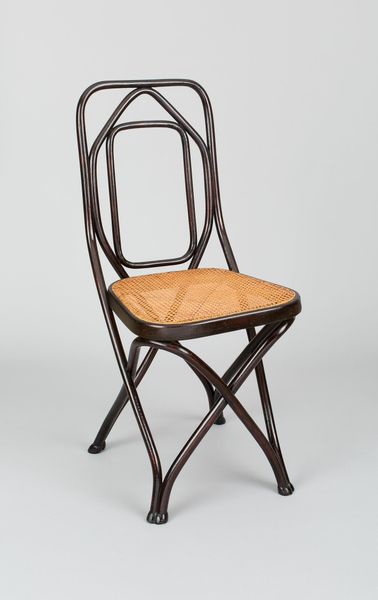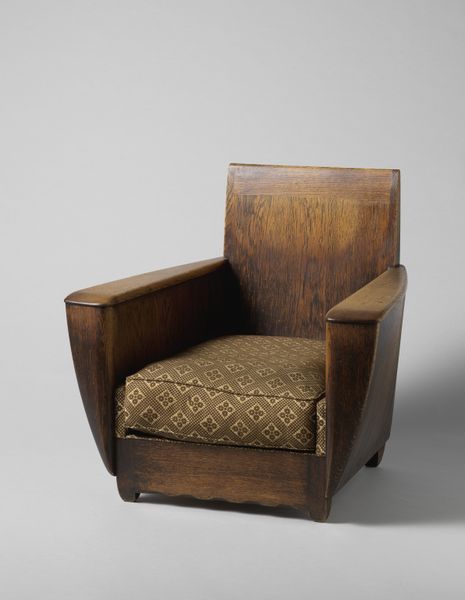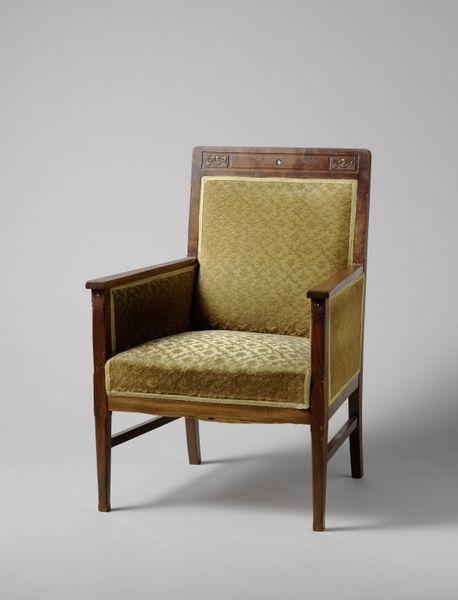
#
round frame
#
staged studio photograpy
#
displayed
#
circular oval feature
#
pottery
#
3d printed part
#
furniture
#
glasgow-school
#
3d shape
#
stoneware
#
decorative-art
#
mechanical engineering model
#
cutout
#
sea
Dimensions: 96.4 × 57.2 × 45.8 cm (38 × 22.5 × 18 in.)
Copyright: Public Domain
Editor: Here we have Charles Rennie Mackintosh’s *Armchair* from 1897, currently at the Art Institute of Chicago. The dark wood gives it quite a somber, almost severe feeling. How do you interpret this work? Curator: I see a powerful statement about design and its role in shaping identity. Mackintosh, working within the Arts and Crafts movement, challenges the industrial aesthetic with this piece. Think about the social context: late 19th century, mass production burgeoning, and a growing concern over the dehumanizing effects of industry. This chair becomes a reaction against that. Editor: So, it’s more than just a chair; it's a political statement? Curator: Precisely. It embodies a desire to reclaim craft, to reconnect with the handmade. Look at the verticality and the stylized, almost abstracted forms. What might those design choices be communicating? Editor: Perhaps a rejection of the ornate, mass-produced furniture of the time, going back to simpler, more honest forms? Curator: Exactly. And consider the symbolism inherent in furniture. The chair as a site of rest, of authority, of domesticity. Mackintosh reclaims these spaces, injecting them with a deliberate artistic vision that resists easy categorization. It bridges art and design, but also comments on gendered spaces, the role of the domestic, and the potential for art to be a catalyst for social change. The cutout shapes also imply the female figure. What does that make you think about? Editor: Wow, I didn’t think a chair could hold so much meaning! It’s a fascinating intersection of design, social commentary, and artistic expression. Thanks! Curator: My pleasure. It is pieces like this that remind us that art always exists within a matrix of social, historical, and political forces, just waiting to be unearthed.
Comments
No comments
Be the first to comment and join the conversation on the ultimate creative platform.
